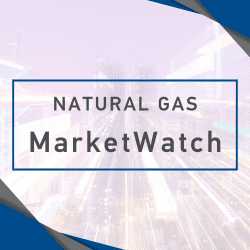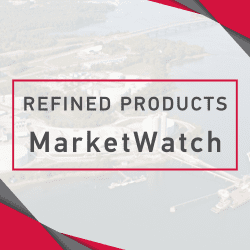Have you ever noticed that the roads are much more populated in the summer months than in the winter? Economically, with increased demand for fuel to keep families and businesses on the move, comes the dreaded increase in gas prices at the pump. While increased demand impacts prices due to lowered supply, there are other factors at play, such as inflation, geopolitical events, natural disasters, and more. One factor that some consumers may not consider is the fact that different fuel blends are made available for the different seasons—particularly summer and winter.
What’s the Difference Between Summer Fuel and Winter Fuel?
The key ingredient here is butane. In the summer months, gasoline formulations are adjusted to reduce the amount of butane in the fuel. This is because butane evaporates easily at higher temperatures, which can lead to increased emissions and contribute to air quality issues during the hot summer months. To combat this, refineries produce a “summer blend” gasoline that typically has a lower volatility.
Summer Blend Gasoline
Summer blend gasoline has a lower Reid Vapor Pressure (RVP), which measures gasoline’s propensity to evaporate. Lower RVP means the gasoline is less likely to evaporate in high temperatures, reducing the risk of smog formation and improving air quality. However, producing summer blend gasoline is more complex and costly. Refineries need to modify their operations and use additional processes to remove butane and other volatile compounds, which increases production costs. This added complexity often results in higher prices at the pump.
While RVP contributes to higher prices in summer, it is not the sole factor affecting gasoline prices. Several other factors also influence summer gas prices, including crude oil prices, refinery capacity, distribution costs, and local and state taxes. The value of crude oil and fluctuations in the crack spread also play significant roles. In recent years, broader macroeconomic events, such as the COVID-19 pandemic, the Russia-Ukraine war, and the Israel-Hamas conflict, have caused substantial price fluctuations that go beyond seasonal effects. These events can lead to price spikes and drops that are not solely attributable to seasonal changes.
Winter Blend Gasoline
In contrast, winter blend gasoline has a higher RVP, allowing for easier evaporation and engine starting in cold temperatures. Butane is a key component in winter blends because it provides a higher vapor pressure, making the fuel more volatile and suitable for cold starts. Since butane is relatively inexpensive, winter blends are cheaper to produce than summer blends.
Impact on Gasoline Prices
The seasonal switch from winter to summer blend gasoline significantly impacts gasoline prices. Here are the main reasons why:
Production Costs: As mentioned, summer blend gasoline is more expensive to produce due to the additional refining processes required to lower its RVP. These higher production costs are typically passed down to consumers, leading to higher prices at the pump during the summer months.
Regulatory Compliance: Environmental regulations mandate the use of summer blend gasoline in many regions to reduce emissions and improve air quality. Refineries must comply with these regulations, which can involve costly adjustments to their operations and supply chains.
Supply and Demand: The transition period between producing winter and summer blends can temporarily reduce the supply of gasoline as refineries switch their operations. This reduction in supply, coupled with the increased demand for gasoline during the summer travel season, creates a perfect storm for increased prices.
Increased Demand and Travel Patterns
Another major reason for the spike in summer gasoline prices is the dramatic increase in travel during the warmer months. Families embark on road trips, vacations, and weekend getaways, significantly raising the demand for gasoline. According to the U.S. Energy Information Administration (EIA), gasoline demand peaks in the summer as travel increases, pushing prices higher. In fact, during the summer months, Americans are projected to drive about 35 billion miles more than in winter, leading to a direct correlation between travel behavior and gasoline prices.
Sprague’s Gasoline Products
Sprague is a leading fuel supplier, offering unbranded gasoline at select terminals across the Northeast. Our quality gasoline products meet all State and Federal Standards, and we pride ourselves on providing a consistent supply for our customers. We offer regular, mid-grade, and premium gasoline products to meet various needs. Check out our terminal page to view our network and product supply near you.
E85 Ethanol-Gasoline Blend
Our E85 Ethanol-Gasoline Blend is an environmentally friendly, cost-effective, and efficient biofuel alternative that is 100% compatible with Flex Fuel vehicles. This alternative fuel can currently be found at our Lawrence, NY Terminal.
Understanding why gasoline prices rise in the summer can help consumers make informed decisions about their fuel usage and expenses. Factors such as seasonal fuel blends, increased demand from summer travel, refinery maintenance, inflation, and global market dynamics all contribute to the summer price surge.
At Sprague, we are committed to providing reliable fuel solutions and keeping our customers informed about the factors influencing energy prices. By staying educated and adopting smart fuel practices, consumers can navigate the complexities of gasoline prices with greater ease.
For more information on our fuel services and solutions, visit our website and stay connected with us for the latest updates on energy trends and best practices.










